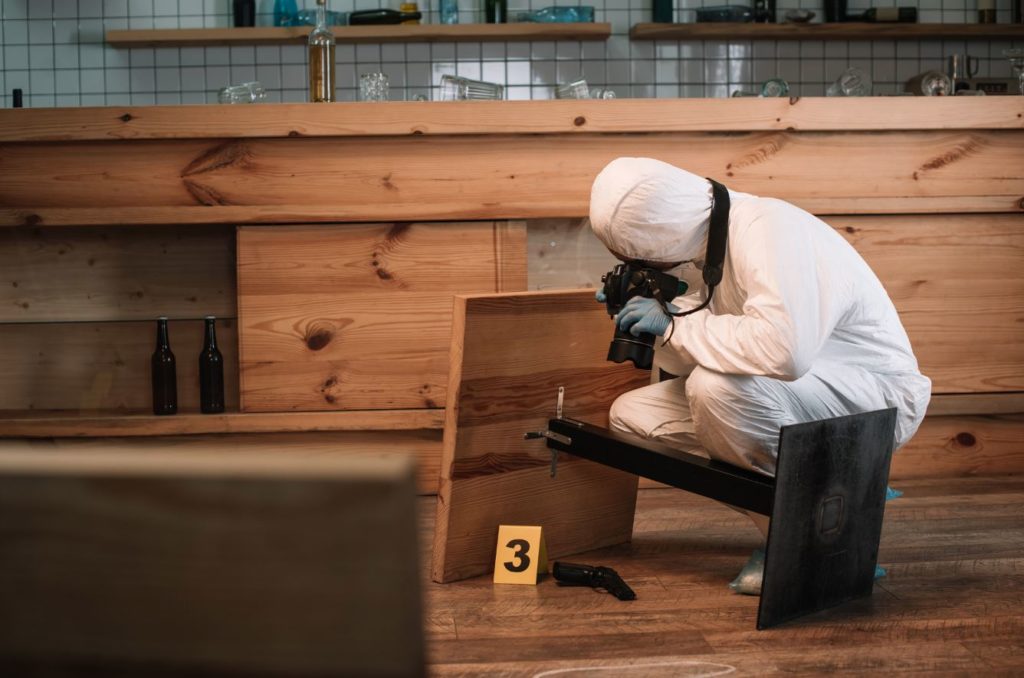In our first blog, we discussed camera modes and how to make the best choice as a forensic photographer. Then, we discussed the importance of making good photography choices – regarding exposure controls, camera lenses, metering modes and more. Now, we will jump into camera selection – specific to forensic photography.
“Size matters not. Judge me by my size, do you?”
Fellow Star Wars nerds will recognize this line uttered by Yoda in response to Luke thinking him too diminutive to accomplish a feat of strength. The moral is that power and ability are not necessarily dictated by size. In the world of camera sales, the biggest price tag doesn’t necessarily correlate with the best results.
When I teach photography, I frequently hear the complaint, “This camera doesn’t take good pictures.” This is usually followed by the question, “Which camera should I buy?” An examination of the camera invariably proves the student wrong – the camera works just fine. The problem is the student doesn’t understand how to use it. Yet.
Several years ago, I attended a crime scene reconstruction course offered by Dr. Henry Lee, via his eponymous forensic science institute. We were all issued small point-and-shoot cameras and walked through a series of exercises. The big takeaway: a skilled photographer with a cheap camera will get better results than a novice with an expensive one. Size matters not.
But, then again, sometimes it does.
Megapixels. Everyone wants to know, “How many megapixels is that camera?” But actually, that’s not the first question to ask. Sensor size is the first thing we want to know. The larger the sensor, the larger the individual pixels can be, and the better its light-gathering ability. This translates to better image quality, dynamic range, and low-light performance. Larger sensors also tend to produce less (electronic) noise. Alas, larger sensors come with larger price tags. Everything in photography is a trade-off.
As far as pixel count is concerned (megapixels) the higher the count, the larger you can enlarge an image while maintaining clarity. For most forensic work, a 12MP image sensor in a digital single lens reflex camera will produce acceptable results. Pixel count is inextricably tied to sensor size when understanding image quality. Simply put, a large image sensor has larger pixels, and larger pixels yield better image quality. This means you can get better results with a lower pixel count on a large sensor than a somewhat larger pixel count on a smaller sensor.
What is your camera’s primary purpose?
Camera selection depends on purpose. A digital single lens reflex (DSLR) camera is the workhorse of the forensic world. Its size, versatility, image quality, and ability to be outfitted with interchangeable lenses and accessories – just like the 35mm cameras of the film era – make it ideal for crime scene work, especially for exam-quality images.
Small point and shoot cameras have their place too. Quick snapshots of minor incidents, especially those that need to be documented but will not go to court, are ideal for a point and shoot. So are tight spaces where a DSLR won’t fit, like under a car seat. Spherical cameras systems, like OSCR360, also play a critical role in crime scene documentation. The ability to capture an entire space in one image provides context and spatial relationships for items of evidence and can give jurors a virtual tour of the scene.
Looking for additional information on camera selection specific to forensic photography? Want to sharpen your skills and integrate spherical photography into your workflow? L-Tron offers a Forensic Photography Refresher course, geared towards escaping manual mode.
For more information on our next course, visit: L-Tron.com/intro-forensic-photography-course
